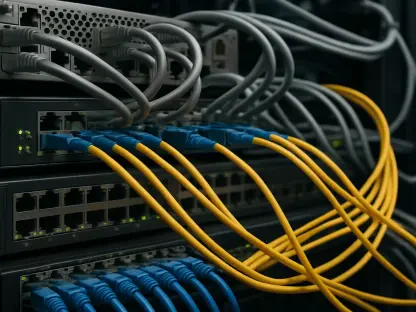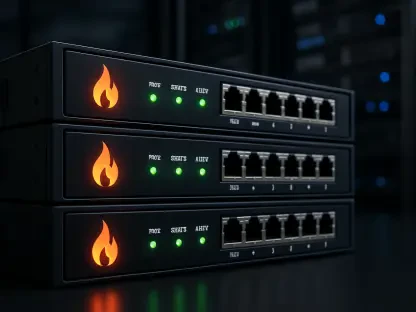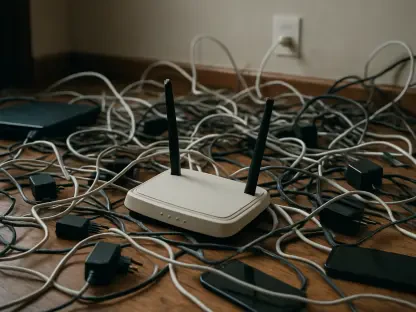The cellular IoT module market has demonstrated remarkable growth in recent years despite facing significant geopolitical challenges between the United States and China. This resilience is reflected in the market’s impressive 23% year-over-year increase in shipments during the first quarter of this year, as reported by IoT Analytics. It marks the fifth consecutive quarter of expansion, highlighting the industry’s ability to bounce back from the inventory correction issues experienced two years ago. The positive momentum emerged last year with a 15% year-over-year shipment increase, rebounding from the previous year’s decline of 16%. These figures underscore the industry’s resilience and its successful navigation through past challenges, signaling a return to more stable growth conditions.
Geopolitical Impact on Cellular IoT
Quectel’s Market Leadership Amid Geopolitical Tensions
The cellular IoT module market continues to be shaped by geopolitical dynamics, with notable impacts stemming from Quectel’s inclusion on the U.S. Department of Defense’s 1260H List, which identifies “Chinese military companies” within the United States. Despite concerns surrounding this classification, Quectel has maintained its market leadership, achieving a 31% year-over-year shipment growth in the first quarter of this year—affirming its robust position. The listing, however, has prompted Western device manufacturers to reconsider their sourcing strategies and has sparked discussions on reducing dependence on Chinese manufacturers. The evolving situation suggests a potential shift in sourcing decisions moving forward, introducing a complex interplay of market competition influenced by geopolitical concerns.
Market Concentration and Competitive Landscape
The cellular IoT module market exhibits a concentrated competitive landscape dominated by key players. The top five companies account for 73% of total global shipments, marking their influence on market dynamics. Quectel leads with a substantial 40% market share, followed by China Mobile, which holds 15% and has experienced remarkable 100% year-over-year growth, driven by LTE CAT 1 bis module advancements. Other notable players include Fibocom, Sunsea AIoT, and Telit Cinterion—the latter being the only Western vendor among the top five, commanding a 4% share. This concentration underscores the fierce competition and intricate market strategies that drive growth and expansion in the cellular IoT landscape, shaped by both technological innovation and geopolitical factors.
Strategic Opportunities and Innovations
Realignments and Emerging Market Opportunities
The recent exit of Switzerland-based u-blox from the cellular IoT module business, though representing only 1.1% of global revenue, has paved the way for strategic opportunities within the industry. This departure creates potential for Western companies to fill the void and offer alternative products to u-blox’s former clientele. Emerging players like Eagle Electronics have capitalized on this opening, establishing a new production facility backed by licensing agreements with Quectel. Such strategic movements indicate growth potential amid ongoing supply chain concerns, highlighting how shifts within the market can foster innovation and explore new avenues for expansion and adaptation in a rapidly changing environment.
Regulatory Influences and Technological Advancements
Regulatory changes play a crucial role in driving innovation within the cellular IoT sector. The implementation of cybersecurity requirements under the European Union’s Radio Equipment Directive (RED), effective from August 1st this year, has introduced new standards for secure boot, encrypted communications, and unauthorized access protection. This regulatory framework positions Western companies favorably, as they align more closely with these standards compared to some Chinese vendors, who may face compliance challenges. These regulations underscore the importance of maintaining secure and reliable IoT modules, simultaneously fostering technological advancement and encouraging competition. The changing regulatory landscape is crucial for shaping industry-leading practices and maintaining innovation-driven growth.
Technological Trends Driving Market Growth
LTE Cat 1 bis and 5G Module Deployment Growth
Two major technological trends fuel the cellular IoT module market’s growth: the rise of LTE Cat 1 bis and the increasing prevalence of 5G module deployments. LTE Cat 1 bis saw a tremendous 122% year-over-year growth and has emerged as a cost-effective, globally compatible alternative to NB-IoT and LTE-M, suitable for various IoT applications. Its widespread adoption demonstrates its versatility in meeting the diverse demands of the IoT landscape while offering competitive advantages for cost-sensitive markets. Meanwhile, 5G module shipments grew by 36% year-over-year, bolstering deployments in fixed wireless access, automotive communications, and industrial applications. Emerging technologies, such as 5G RedCap, promise to further innovate by balancing power consumption, cost efficiency, and performance optimization, addressing a range of mid-tier IoT applications.
Future Trajectories and Supplier Transitions
Looking ahead, IoT Analytics projects a continued upward trajectory for the cellular IoT module market with a 17% year-over-year growth expected, underscoring the sector’s ongoing expansion. However, navigating this intricate landscape requires careful consideration of geopolitical tensions, adherence to evolving regulatory demands, and adapting to rapid technological advancements. As the industry moves through this pivotal year, the potential for supplier transitions and architectural redesigns by the next year highlights the market’s capacity for adaptation and its readiness to embrace emerging opportunities. Within this complex environment lies the potential for transformative growth, driven by a commitment to innovation and strategic evolution in response to changing industry demands.
Industry Dynamics and Strategic Evolution
Reevaluating Supply Chains and Strategic Positioning
In the evolving landscape of cellular IoT, device manufacturers face a critical need to reassess and potentially diversify their supply chains amid shifting geopolitical factors and regulatory changes. This reassessment paves the way for strategic evolution within the market, positioning Western companies to gain competitive ground and expand their influence. Challenges surrounding cost disparities with Chinese competitors remain a focal point, pushing these companies to innovate and leverage regulatory advantages to reinforce their market presence. As the market navigates these complex dynamics, strategic positioning becomes imperative in addressing both present challenges and future opportunities, fostering a competitive environment ripe for growth and innovation.
Opportunities for Western Companies
The cellular IoT module market shows a highly concentrated competitive arena led by key companies. Dominating the field, the top five firms are responsible for a commanding 73% of global shipments, playing a crucial role in shaping market dynamics. Quectel stands at the forefront with an impressive 40% market share. Following closely behind is China Mobile, which maintains a 15% share and has seen astonishing year-over-year growth of 100%, propelled by advancements in LTE CAT 1 bis modules. Other significant players include Fibocom, Sunsea AIoT, and Telit Cinterion. Notably, Telit Cinterion is the sole Western company among the top five, holding a 4% share. This market concentration emphasizes the intense competition and elaborate strategies that participants employ to drive growth and expand their influence in the cellular IoT sector. These efforts are shaped by technological breakthroughs and geopolitical considerations, which together craft the evolving landscape of cellular IoT.









